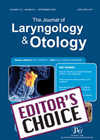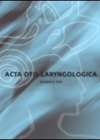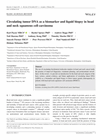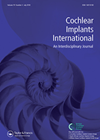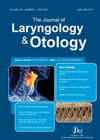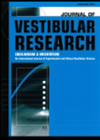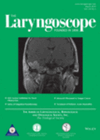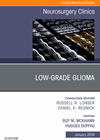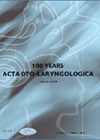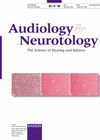
Journal Reviews
How effective and safe is audiologist-led screening of acoustic neuroma in patients with asymmetrical hearing loss and unilateral tinnitus?
About two out of 100 patients presenting with asymmetric hearing and unilateral tinnitus have acoustic neuroma. The traditional method in which these patients first attend a clinician and then undergo screening through an MRI, can be expensive and prolong the...
Is there a role for facial nerve decompression in Ramsay Hunt syndrome?
This is an interesting paper. The authors recommend a transmastoid facial decompression for patients with complete facial nerve paralysis with House Brackman HB 5/6 who do not show any sign of recovery after two weeks of treatment following a diagnosis...
Tonsillectomy in or out?
Although tonsillectomy is the most common surgical act performed in ENT practice, there is still some concern about the safety of outpatient or day surgery scheduling, especially in adults. Although this has been common practice in many departments for some...
Cochlear implantation in children with congenital long QT syndrome
Jervell and Lange-Neilsen syndrome is a condition where sensorineural deafness coincides with inherited abnormalities of the heart, resulting in prolonged ventricular repolarisation, frequently shown on an ECG with a prolonged QT interval. These children can present at implant centres for...
Inter-aural hearing preservation in cochlear implantation
Hearing preservation during cochlear implantation is becoming increasingly important, although results can be unpredictable. NICE are in the process of updating their guidance in the UK and it is possible that those with better hearing than the current candidates will...
Differences between paediatric and adult cholesteatomas
An understanding of the differences between adult and paediatric cholesteatomas should be helpful in more effective management of the disease in children. In this study, the authors focused their comparison between paediatric and adult cholesteatomas to the operative findings, rates...
A new criterion for diagnosing chronic tonsillitis?
It is essential to establish the diagnosis of recurrent tonsillitis in patients undergoing tonsillectomy. This is based mainly on history which itself can be inaccurate and is supported by clinical findings which are not truly specific. There seems to be...
Consequences of Meniere’s Tumarkin crises
Many will be familiar with reports of frightening drop attacks without loss of consciousness experienced by some Meniere’s disease (MD) patients. This study analysed data from an electronic survey of over 600 members of a national Meniere’s society. The aim...
Does Tranexamic acid reduce intraoperative bleeding during FESS?
Intraoperative bleeding during FESS can reduce visibility and obscure important landmarks. This can result in longer operative times, increase risks of complications and even lead to incomplete surgery. Tranexamic acid is a drug which prevents fibrinolysis and stabilises blood clots....
DVT prophylaxis in cranial procedures
Deep vein thrombosis (DVT) is a result of disturbed balances in blood flow patterns, blood clotting factors promoting coagulation and vessel wall endothelial injury. The subsequent disruption of coagulation and fibrinolysis mechanisms lead to venous clot formation and propagation. The...
What works better for type 3 tympanoplasty?
This is a systematic review comparing incus transposition (IT) and partial ossicular replacement prosthesis (PORP). There is a total of 14 articles, obtaining 1055 patients: 614 for the IT group and 441 for the PORP group. All included patients had...
Is there a role for hyperbaric treatment in sudden hearing loss?
Sudden sensorineural hearing loss is a common presentation to ENT departments with a significant difference in management both at a local and regional level. The authors seek to clarify the role of hyperbaric oxygen therapy in combination with oral and...

